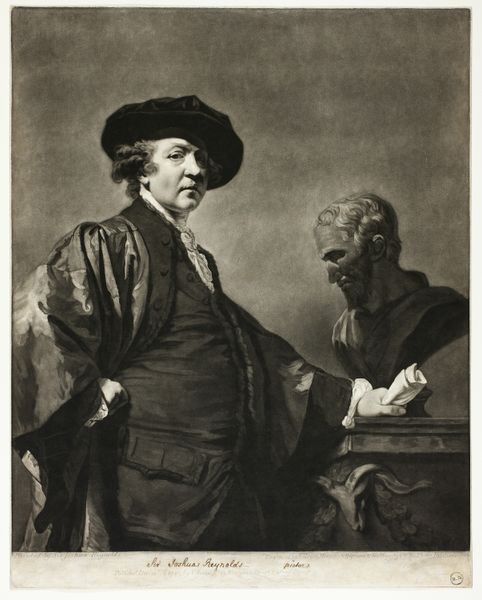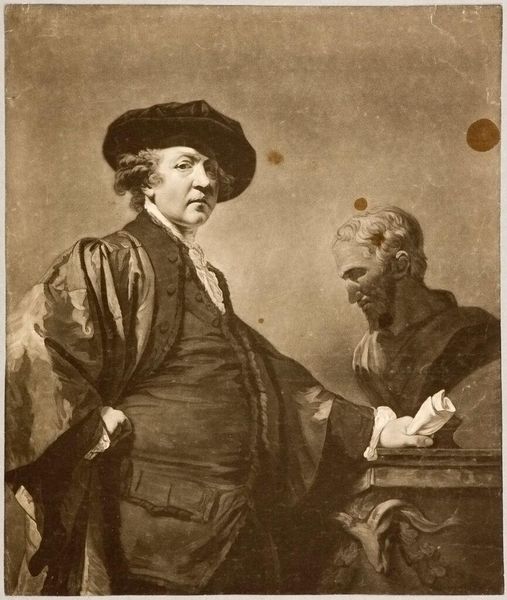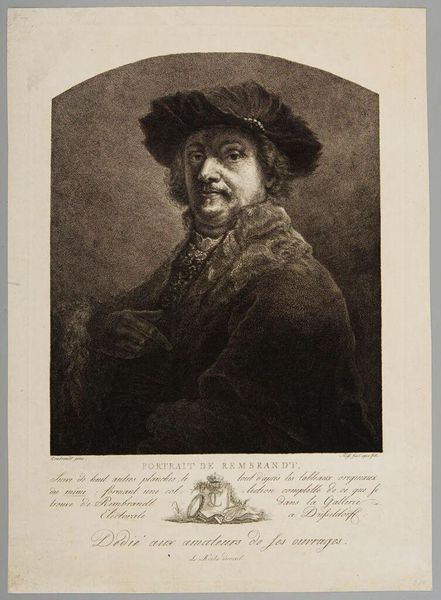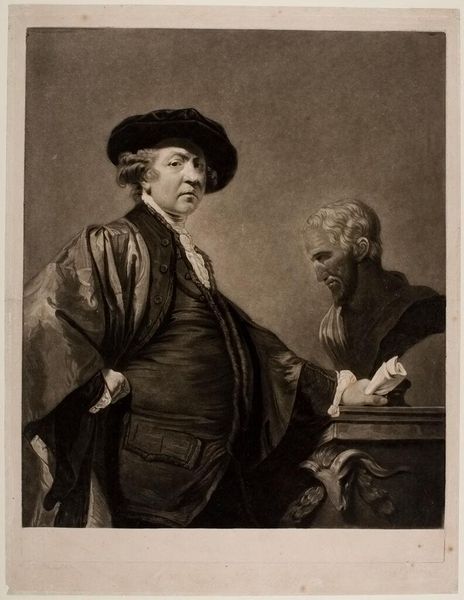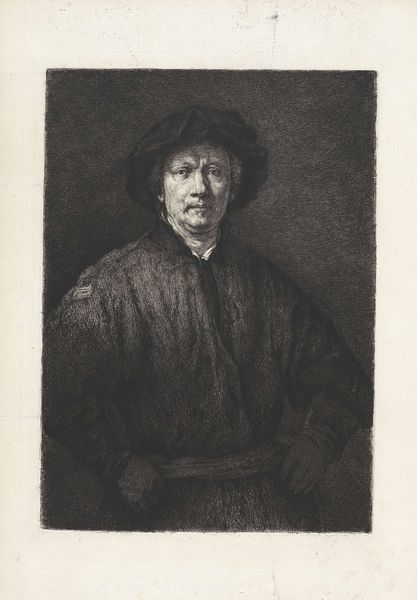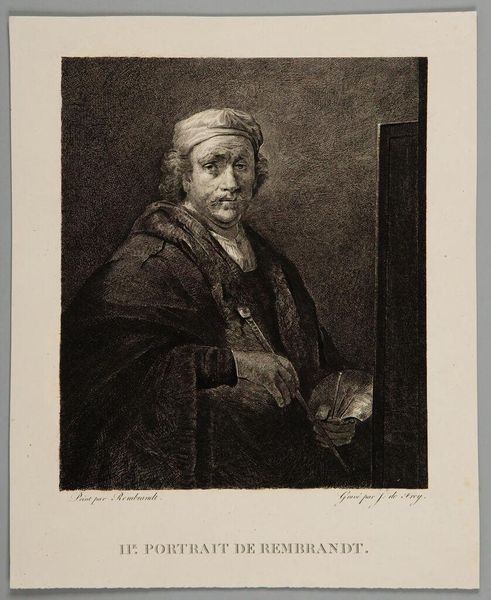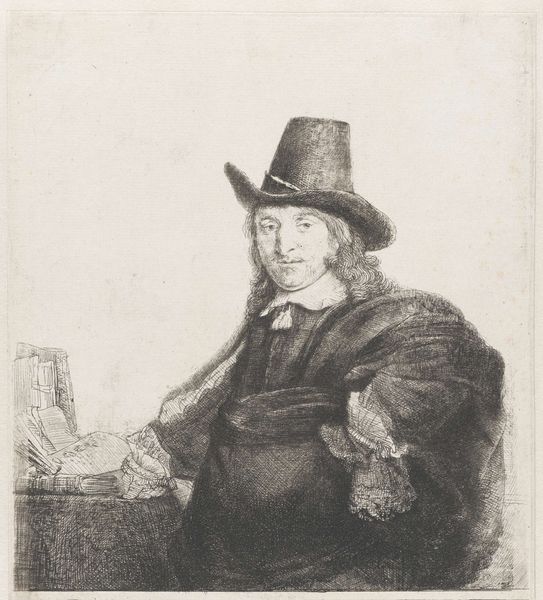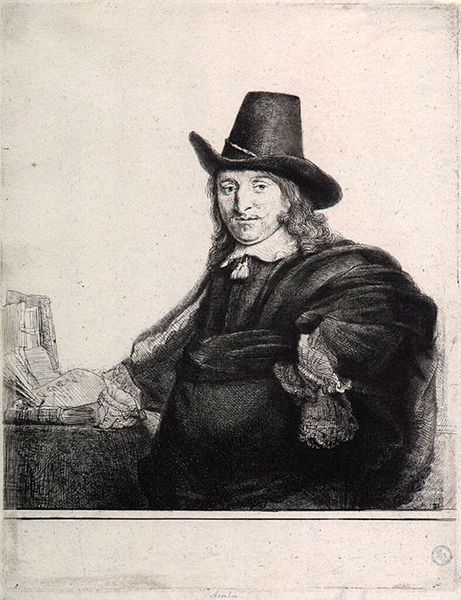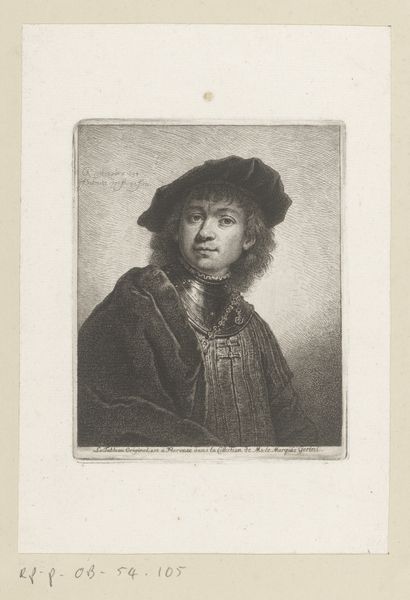
Dimensions: 127 x 102 cm
Copyright: Public domain
Curator: Here we have Joshua Reynolds' "Self-Portrait" from 1773. He made it with oil paint, and it's currently housed right here at the Royal Academy of Arts. Editor: You know, it has this fantastic, almost theatrical quality about it. The way the light catches him feels so deliberate, like he’s staging his own entrance. What do you make of that sculpted figure lurking in the background? Curator: That's a really astute observation. Reynolds certainly understood how to craft an image. And the statue? That places him in a lineage of artists inspired by classical ideals, elevating his status, declaring art history and education in art as being important components to creativity. Editor: I see it as reinforcing a self-image, almost building his own monument. He's literally associating himself with lasting, classical achievements. Does that read a bit grandiose? Curator: I wouldn't say so at all. I think it rather speaks to the ambitions of the Royal Academy, positioning British art on par with those European traditions. Reynolds, as its first president, was extremely invested in legitimizing art as an academic and respected profession. Editor: Right, and the self-portrait becomes a visual manifesto of sorts? I get a real sense of power from it. Even that rolled-up paper he holds; it reads as more than just a drawing. More like a scepter. Curator: That rolled paper may not be accidental. Reynolds understood the role of portraiture and used his image as a statement of purpose. By choosing to depict himself with that kind of authority and setting, Reynolds elevates not just his standing but the artistic professions as well. He may as well be wearing a crown! Editor: A painterly king! It definitely makes you think about the politics of representation, and how even a self-portrait isn't just a personal reflection, but a public declaration. I am intrigued that Reynolds had some sight problems later in life. What if the dark painting is to emphasize his suffering, rather than aggrandizing it? Curator: That may certainly be an interesting point for thought, in a sense, he is both creating history and a person caught in his circumstances. What a fascinating tension there! Editor: Indeed, what lingers isn't just Reynolds the artist, but the artifice itself, the self-awareness in creating an image for posterity. Curator: Precisely. This portrait continues to resonate because it captures ambition, artistic lineage, and the inherent construction of selfhood through art, a bold claim for its time, one we can interpret in so many ways still.
Comments
No comments
Be the first to comment and join the conversation on the ultimate creative platform.
